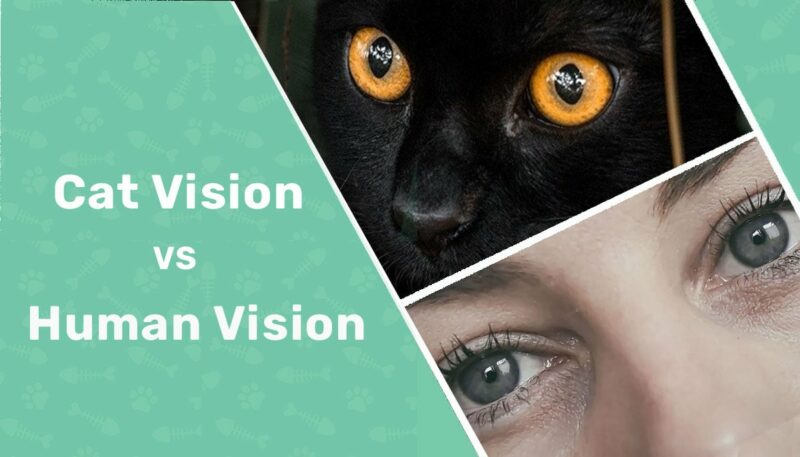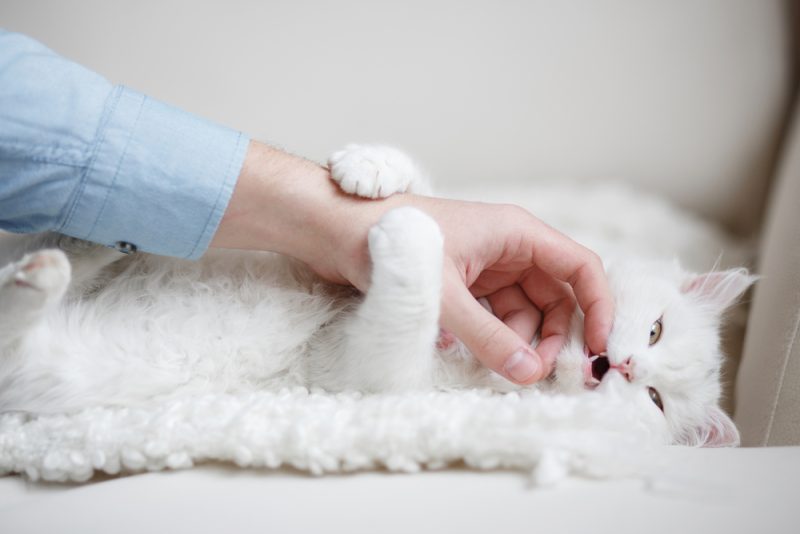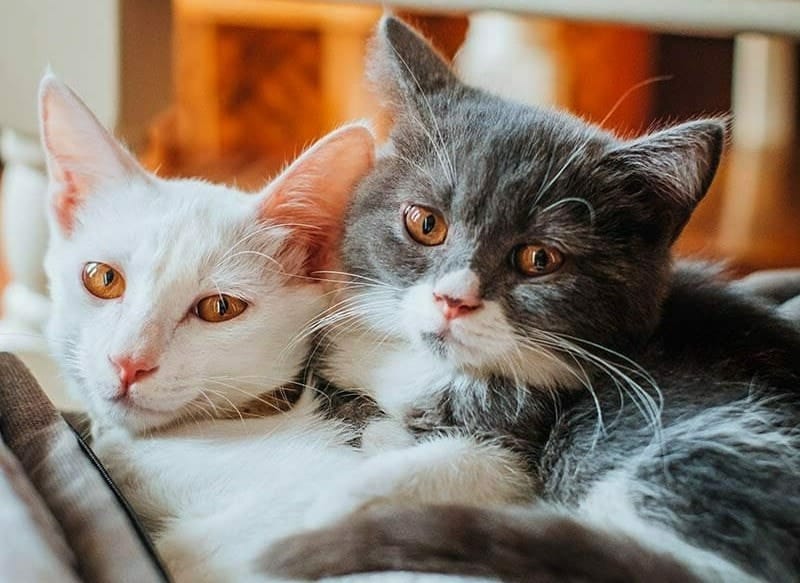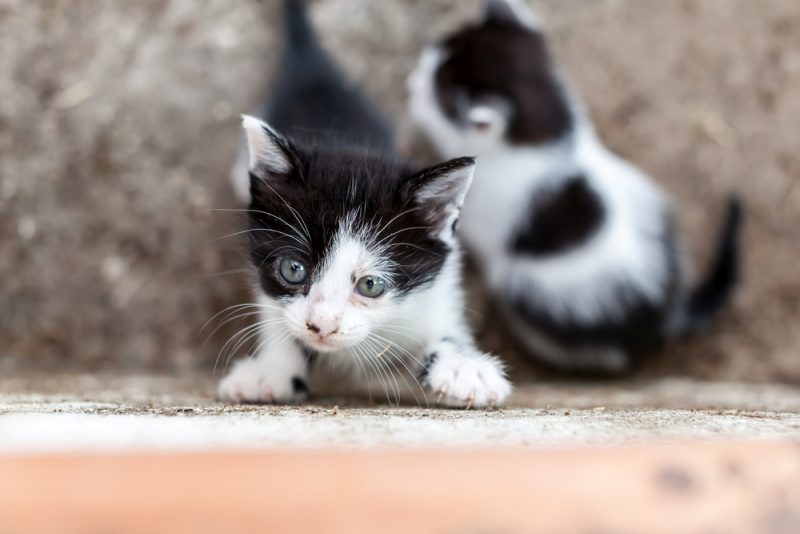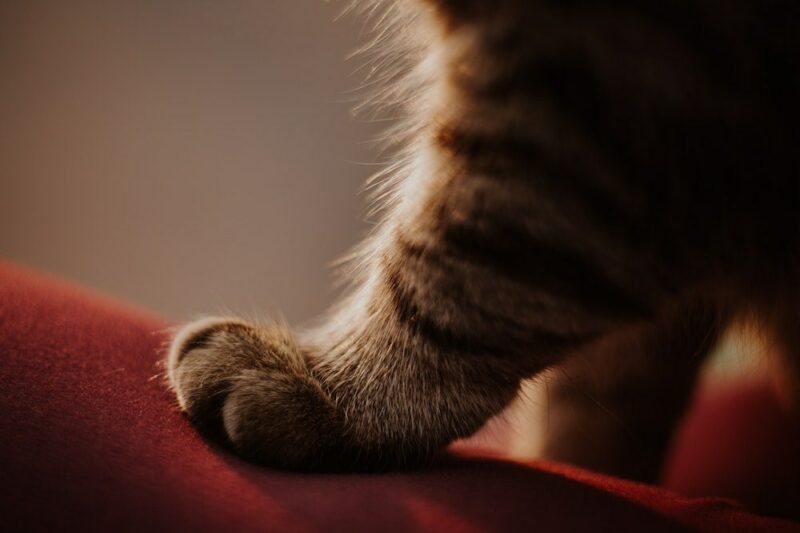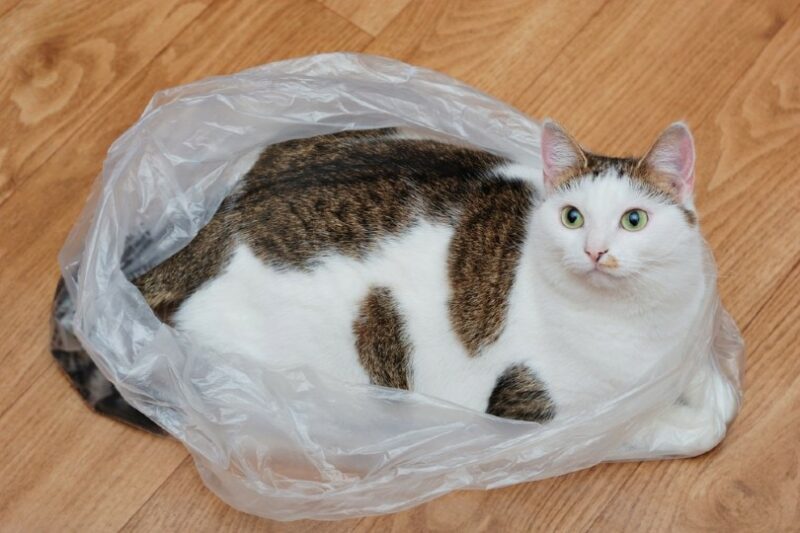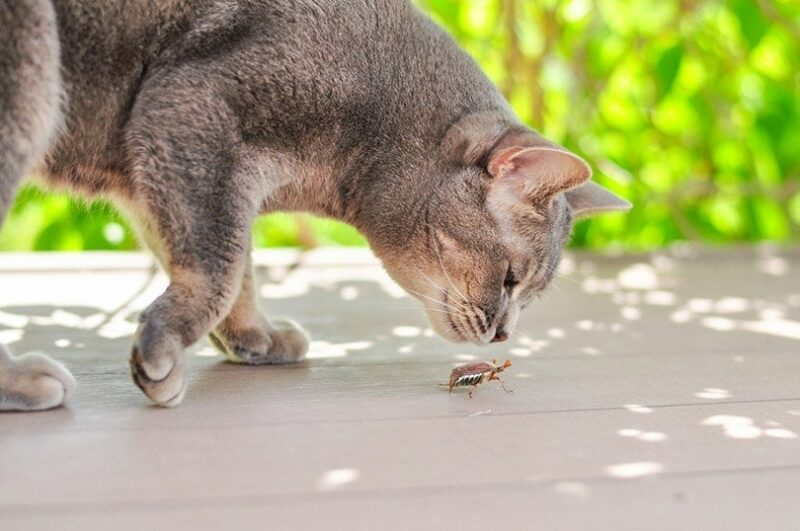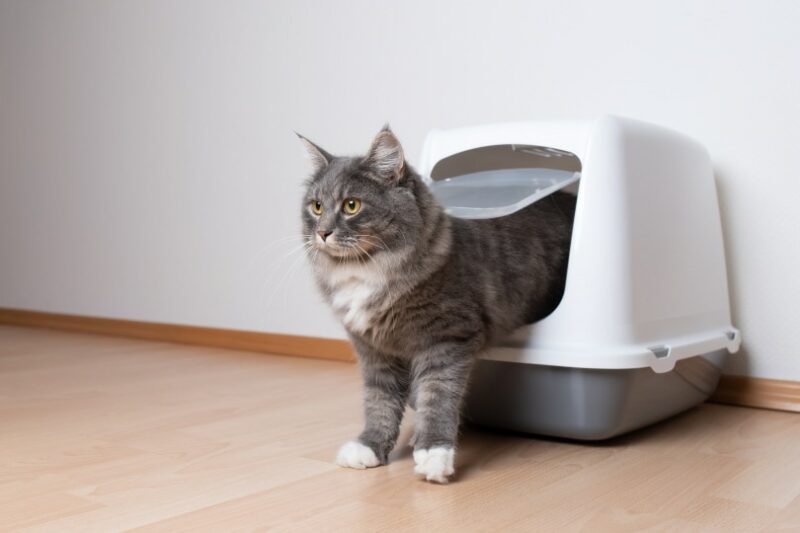Have you ever looked at your cat and wondered how they see the world? Do they see the same colors and shapes? Do they experience color blindness? Do they have night vision that enables them to see exceptionally well in the dark?
If you’ve ever wondered how a cat’s vision compares to human vision, you’re in the right place! Here, you’ll find all the differences (and similarities) between the two and how your favorite feline’s vision stacks up compared to yours. Read on to find out more!

Cat Vision vs. Human Vision at a Glance
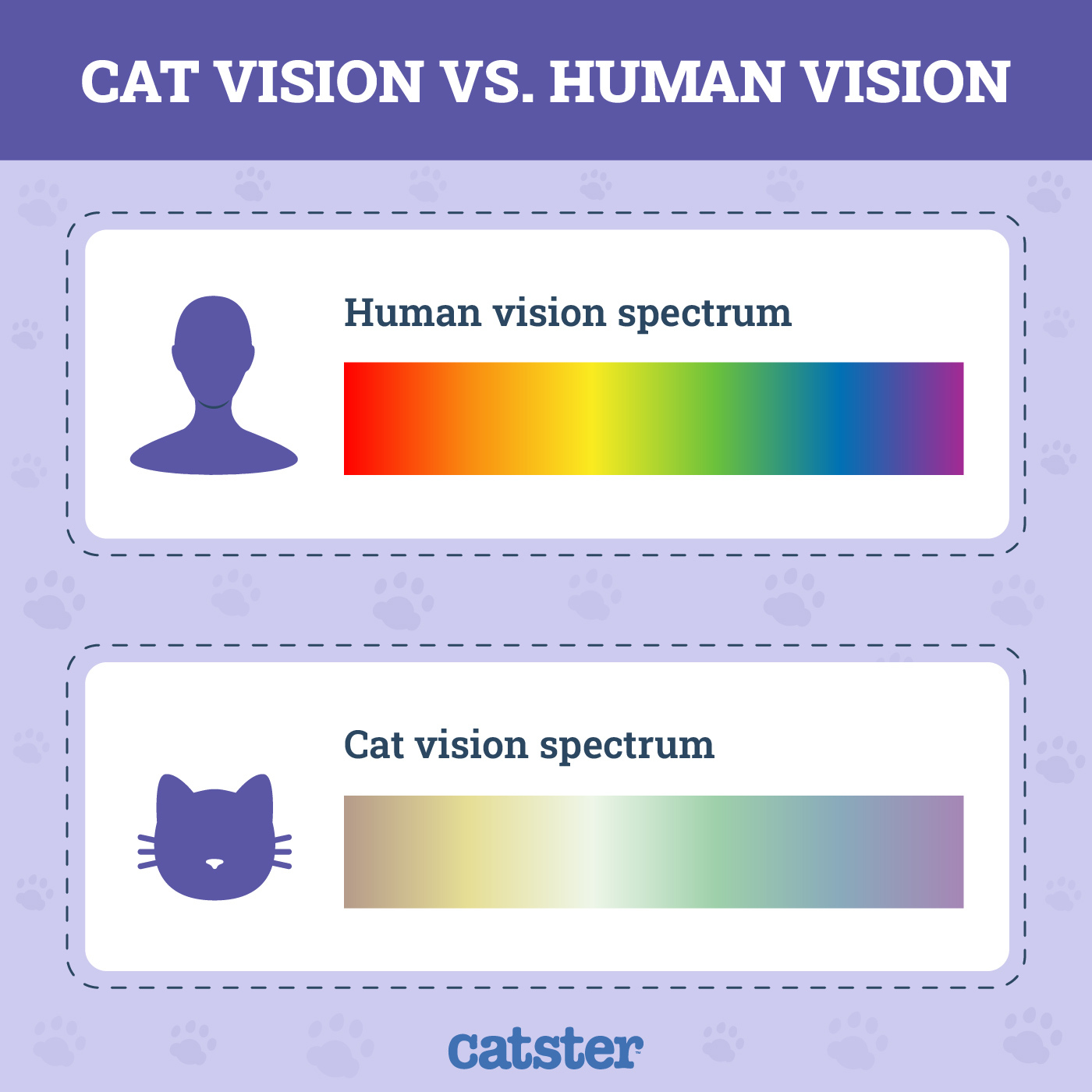
Overview of Cat Vision
While we can’t possibly know exactly what a cat sees, we can figure out how they see the world by looking at the structure of the eyeball and how it compares to a human’s vision.
Structure of the Cat Eye
A cat’s eye is quite similar to a human’s. Like us, they have the sclera or white of the eye, which, together with the cornea, form the outermost layer of the eye. The sclera is covered with conjunctiva (a thin transparent membrane), and it’s not normally visible in cats.
The cornea is the clear dome on the front of the eye, responsible for allowing light in. Just like humans, cats have the iris, which is responsible for the color of their eyes and controlling how much light enters the eye through the opening in the middle. This is called the pupil, which changes size and shape to let in more or less light depending on the ambient light.
How else is a cat’s eye similar to our own? A cat’s eye also contains a lens that is responsible for focusing the light on the retina to generate a sharp image. However, the lens is an area where a cat’s eye differs from a human’s since the changes a cat’s lens goes through appear to be more limited than what a human’s lens can do.
Then, at the back of the eye, there’s the retina, where perhaps the most significant differences lie. Retinas in cats and people contain photoreceptors, with the two types being cones and rods. Cats seem to also have three types of color cones, but their color vision is not as rich as ours and they are suspected only to be able to see colors in the way a colorblind person would. On the other hand, cats have many more rods than humans, which gives them excellent night vision.
Finally, cats have a structure known as the tapetum lucidum, a reflective layer that sits behind the retina that works as a mirror reflecting light back to the retina. This enables them to get the most out of available light, which boosts their night vision!
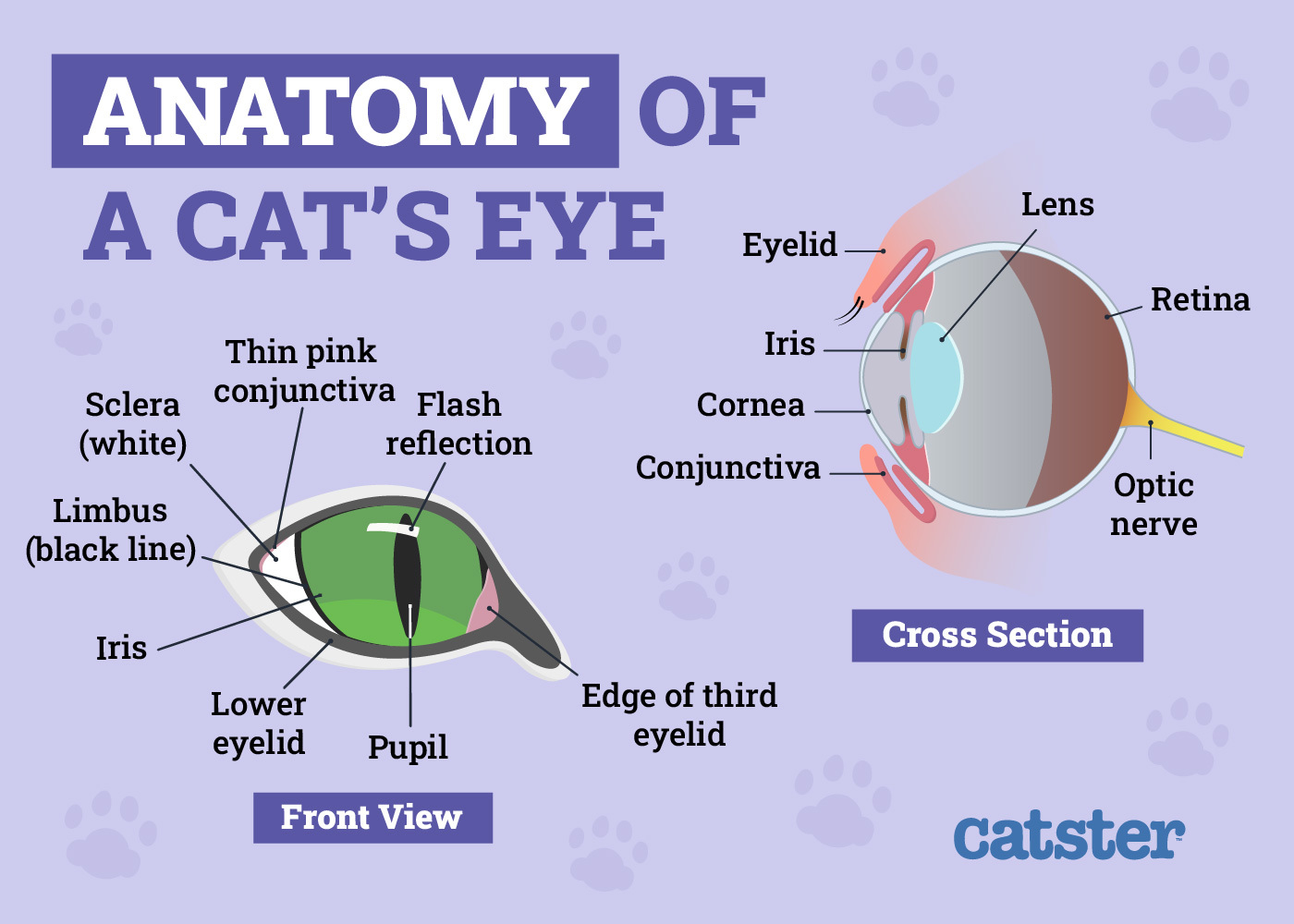
Visual Field
The visual field is the area a human or animal can see when they have their eyes focused on one point. So, peripheral vision is essentially what can be seen to the side, straight ahead, below, and above where one is looking. Cats have an advantage here because their visual field is 200 degrees, which is wider than a human’s.
Visual Acuity
Visual acuity is how clear (or unclear) one can see. You’re probably familiar with the phrase “20/20 vision”; a cat’s can be anywhere from 20/100 to 20/200. That means what a human can see from 100 to 200 feet away a cat has to be 20 feet away to see clearly.
Why is a cat’s vision so much blurrier than our own? This is likely because they don’t have the necessary muscles that enable the shape of their eye lenses to change and thicken in order to focus better.
Color Vision
Some believe cats can’t see colors at all but only in shades of gray. However, cats are considered to be trichromats, which means they have three types of cones in their eyes that should enable them to see a wide range of colors. You’d think that would mean they’d see colors just as a human does.
Instead, cats are thought to see similarly to humans with color blindness. So, though they don’t have trouble seeing blues and greens, colors on the red scale can appear closer to green or blue rather than shades of red.
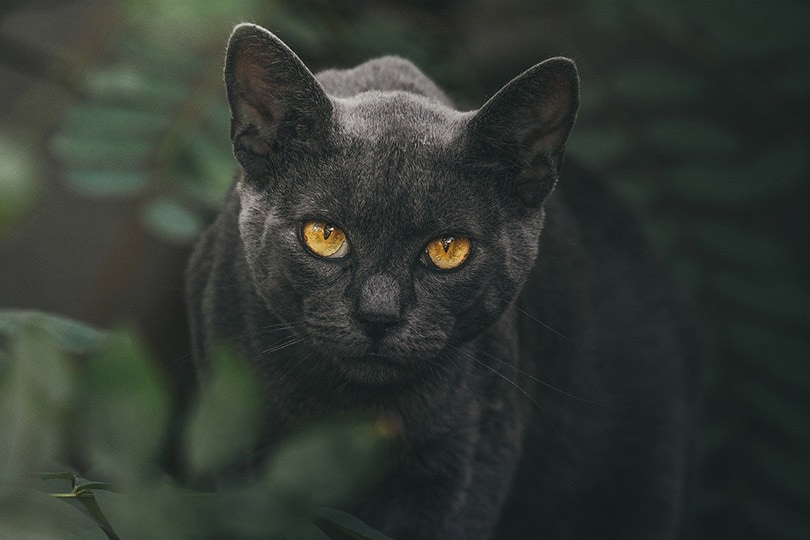
Night Vision
As for the number of rods cats have in their retina, they have many more than humans. The rods allow them to have great motion perception, as well as improve their ability to see in low light conditions. It’s estimated that cats can see clearly with about 1/6 the amount of light a person would need.
As explained before, cat’s eyes also have a tapetum lucidum that is behind the retina to boost their ability to see at night. The tapetum reflects light that wasn’t absorbed by the photoreceptors back for a second chance to get used. This reflection enables kitty to pick up on a tiny bit of light that may be around (and it’s why their eyes seem to glow when it’s dark!).
- Better motion perception
- Can see in the dark
- Don’t see colors as well as humans
- Some blurring vision with bright light
- Have to be up close to something to see it as well as humans do from far away
Overview of Human Vision:
Human vision differs from a cat’s mainly in the way we see a more comprehensive range of colors more vibrantly and have superior visual acuity.
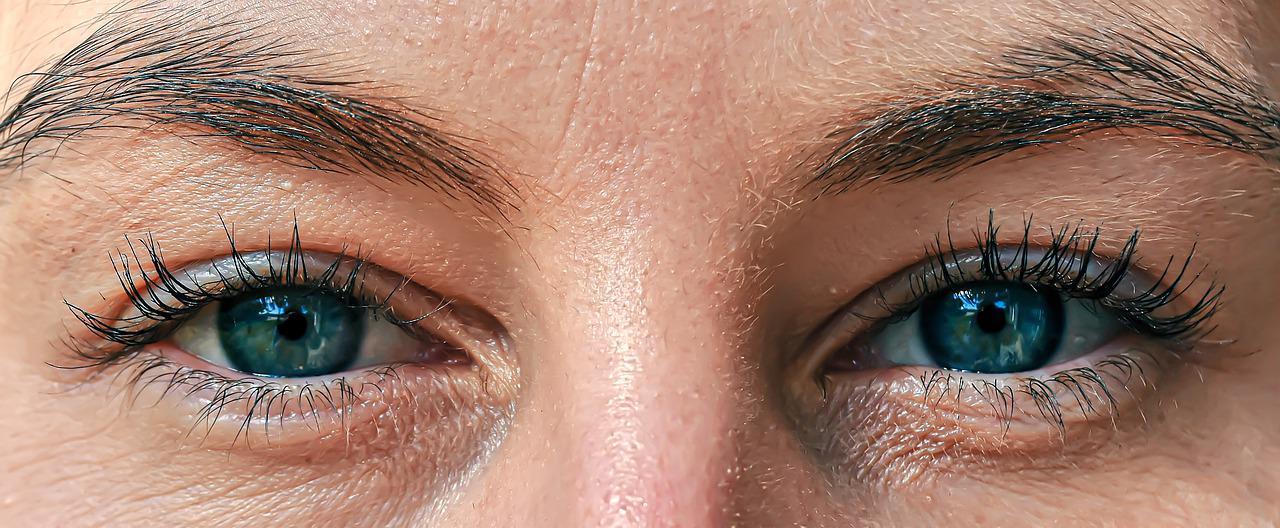
Structure of a Human Eye
As we said when we covered the structure of a cat’s eye, the human and cat eye are similar. For the most part, our eyes contain the same elements as a cat, such as a cornea, iris, pupil, lens, and retina. The most significant difference between the structure of a human’s and a cat’s eye lies in the back of their eyes, having more cones and fewer rods and not having a tapetum. This affects the range of colors we are able to detect and how well we see in bright light since the tapetum can cause some blurring of vision.
Visual Field
When it comes to a human’s peripheral vision, we have a bit of a narrower visual field than cats. Where they can see 200 degrees in their visual field, we can only see 180 degrees. It makes sense since cats can use their wider visual field to aid in hunting!
Visual Acuity
You may not have 20/20 vision as a human, but you’ll likely see better than your kitty. Humans can see distant objects and those that are close because how well our lens focuses on different objects .

Color Vision
Humans are trichromats as well, and we also have three types of cones in our eyes that allow us to see red, green, and blue. This allows us to see a broad range of colors (unless you are color blind). The most significant difference between a human’s vision and a cat’s is that we see a larger range of colors, plus we can see things more vibrantly. Simply put, our world is a little brighter!
Night Vision
Let’s face it; a human’s night vision is pretty lousy. While we see the world in vibrant multi-color due to the number of cones we have in the eye, we lose out on seeing in the dark because the human eye has fewer rods in the retina than a cat. Still, it seems like a pretty fair trade-off!
- See the world in vibrant colors
- Can see things clearer than a cat would from further away
- Can see very well in bright light
- Peripheral vision is slightly narrower than a cat’s
- Little ability to see in low light or the dark

Conclusion
As you can see, how cats and humans view the world is more similar than one would think. The structures of our eyes are nearly the same. The main differences are the size of the cornea, the shape and size of the pupil, how the lens accommodates, and how many cones and rods we each have.
However, this near-identical eye structure doesn’t mean we see precisely the same. Even though cats are trichromats like us, they are still suspected of having less ability to see the same number of colors as humans (and likely see colors in duller shades than us). Cats win out regarding motion perception and the degree of their peripheral vision, however. They also win for night vision, as they can see much better in the dark!
Featured Image Credit: Pixabay
